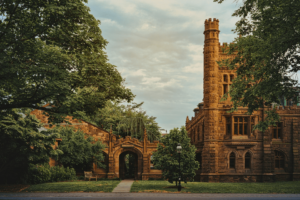The USA is a leading destination for migrants. Individuals from all over the world come to the country to study or work. The nation also provides a dependent visa US to families or relatives of individuals moving there. Dependents in the USA are typically defined as spouses or minor children.
Such people can join their family members living in the US as permanent residents or on a work or student visa. However, children above the age of 21 aren’t eligible to enter as the dependent of an international scholar or student. Wondering what the different types of dependent visas US and how you can apply for them are? Read on to know.
Leap Advantage Virtual Spot Offer Event on May 10th 2024

Last call to secure your spot for Masters in US for Fall ’24 Intake
Leap Advantage Virtual Spot Offer Event on May 10th 2024
Last call to secure your spot for Masters in US for Fall ’24 Intake

Different types of dependent visas in the US
While there are numerous dependent types of visas that individuals can apply for, here are the major dependent visas types in the US.
F-2 dependent visa
This type of visa is for the dependents of individuals who’ve been admitted on the F-1 visa type. Such dependents may receive their visas and admission to the USA based on Form I-20. This form gets issued in the dependent’s name. As long as the F-1 maintains status, the F-2 may remain. Much like F-1 students, the F2 dependents need to keep their passports valid for at least six months into the future.
Check Your Eligibility for 80+ Universities across the USA
Book a free counselling session and find universities where you can get an Admission!

Check Your Eligibility for 80+ Universities across the USA

Book a free counselling session and find universities where you can get an Admission!
H-4 dependent visa
This visa/permit is issued to the dependents of individuals working in the United States under the H-1B category. Such dependents need to fill out an I-539 application. The fee for this application can be paid by the H-1B applicant. Plus, the holders of the H4 dependent visa US are allowed to study on their status.
J-2 dependent visa
Dependents of individuals looking to come to the United States may obtain their J-2 visas via form DS-2019 issued in their names. This visa is provided to the spouse/children of individuals on exchange programs under the J-1 visa category. The interns accompanied by dependents must provide evidence of additional funds sufficient for their support. Visitors under the J2 visa may request work authorisation from the USCIS by submitting form I-765.
L-2 dependent visa
This visa document is for the dependents of those permitted to the United States under the L-1 category. The dependents under this non-immigrant visa can obtain a work permit from the Employment Authorization Document or EAD. Such a permit allows dependents to work under any company. However, the children under the L-2 visa aren’t allowed to work. They can only attend school. The allowed time of stay for all the dependent visas mentioned above is the same as the primary holder’s visas. These visas allow dependents to stay with a family member and travel in/out of the country.
Other dependent visas the US
Apart from the ones mentioned above, some other dependent visas get issued to individuals. Some of these are K-2 dependent visas, N-9 dependent visas and M-2 dependent visas. Under such visas, the spouse can’t work or study but can only live with their partner. While the children can’t work, they can study in a primary or secondary school. For instance, the M-2 dependent visa is reserved for the children or spouse of an M-1 student. An M-2 spouse cannot engage in full-time schooling or work unless it is recreational. However, the children under this visa can study at the primary or secondary level. Such visas differ depending on the purpose of stay of the dependents.
Requirements for dependent visa US
Here are the conditions for a spouse or child to apply for dependent visas in the United States. Condition for a dependent same-sex spouse While a supreme court has passed a decision that makes same-sex spouses eligible for US immigration benefits, certain federal agencies in the country are undecided on the guidelines for their employees. As a result, some difficulty with the Customs and Border Protection gets caused. One must check with the Embassy or Consulate for verification. Conditions for a dependent spouse As per US immigration law, a ‘spouse’ is a legally wedded wife/husband. It includes both same-sex and otherwise. The marriage of two individuals gets recognized if it took place in the country of occurrence legally. Conditions for a dependent child As per US law, an applicant is eligible for a dependent child status in the following cases:
- Unmarried
- A biological child in wedlock
- Under the age of 21
- A biological child out of wedlock (Bonafide proof from the parent’s end of the parent-child relationship).
Documents required for dependent visa US
These are the documents that dependents must have while applying for a dependent visa.
- Birth certificate of the dependent child.
- Marriage certificate for the dependent spouse.
- Passport of the dependent family members and the primary visa holder in the United States.
- Employment Authorization Document or EAD of the dependents if they choose to work in the nation.
- Other documents as proof for any other legal relationships.
- Income proof/proof of funds of the sponsor to show adequate finances.
How to apply for a dependent visa US
Keep reading to learn about the application process for dependent visas US.
Keep the documents ready
Keeping your documents ready is foremost. These include a Marriage Certificate, Birth Certificate, Passport, Partner’s/Parent’s Passport, and Employment Authorization Document.
Keep your photographs handy
Here are some guidelines one must keep in mind for photographs.
- It should be a color photograph.
- It shouldn’t be older than six months.
- It should be in white or off-white.
- The size should be 2×2.
- It should be a passport-sized digital photograph.
- It should be in a (.jpeg) format with a minimum of 600 by 600.
- It should reveal your entire face.
- The individual shouldn’t wear sunglasses or accessories while getting clicked. (Exception: a hearing aid).
- One must dress suitably for the picture.
Filling DS-160
The next step is to fill out the DS-160 form. Here are some guidelines that you should follow while filling out this form.
- Note down the application ID from the top right corner of the page.
- Answer all the questions in English.
- E-sign the application form.
- Upload your digital photo.
- Print a copy of your application. You might require it at the Embassy or Consulate.
Pay the application fees
After carrying out the above steps, you can pay the fees for your dependent visa US application. It is vital to make this payment before scheduling an appointment at the Embassy or Consulate. Once you’ve made the payment, keep the receipt of the application safely for your record.
Appointment and visitation to the Embassy or consulate
The next step is to visit the nearest Embassy or Consulate from your place. You must carry the necessary documents for that visit.
Waiting for the results
The final step in the dependent visa US application is awaiting the results. After applying, you’ll receive a notification from the Immigration Services, Consulate, or Embassy. Moreover, you’ll be asked to submit your biometrics or attend a visa interview if need be. Generally, the immigration services take two to eight weeks to decide on an individual’s dependent visa US application.
Conclusion
The United States is a leading destination for migrants that offers various ways to help families live legally together. So whether you’re a working professional, a student, or a spouse, you can enter the nation. If you’re a spouse or child (below 21 years) of an individual on a primary visa, you’ll have to apply for a dependent visa US. There are various types of dependent visas available to individuals. The major ones include the F-2 visa, H-4 visa, J-2 visa, and L-2 visa. You can apply for the one that suits your requirements following the visa application process mentioned above. While the process can seem complicated, your application for a dependent visa US will get accepted if you follow the guidelines. For further information on dependent visas in the USA, book a free counselling call on LeapScholar today.
FAQs
How long does it take to get a dependent visa US?
The average processing period for a dependent visa US is 15 to 30 days. However, sometimes there can be a slight delay due to multiple reasons. Some of these include excessive workload at the Embassy, delay in delivery, or trouble with the kind of visa you’ve applied for in your application.
How long can I stay after my dependent visa expires?
Once your visa has expired, you can no longer stay in the country. That is why it’s beneficial to get it renewed beforehand. You can stay in the country if you’ve requested a visa renewal. If not, the authorities will be within their rights to deport you.
Should I apply for a dependent visa UK with the application for the primary visa?
You don’t need to apply for a dependent visa with the primary visa. Instead, you can apply for it at a later point in time. However, many believe that applying for them together expediates the process. Either way, the validity and length of your stay are determined by the principal visa category.
What is the eligibility for a dependent visa US?
A spouse (same-sex or opposite) and an unmarried child below 21 years are eligible for a dependent visa US.






